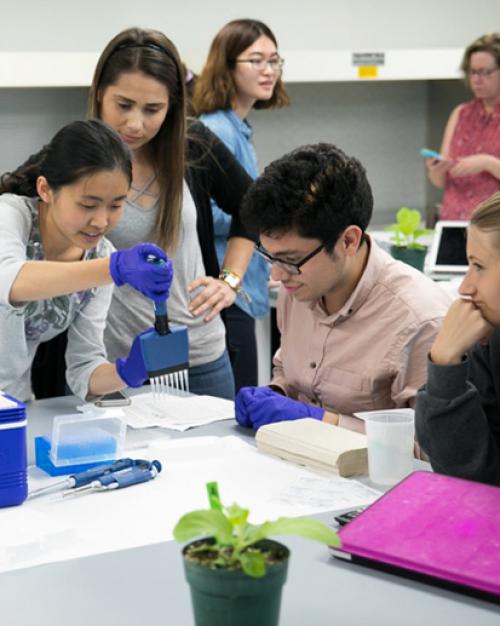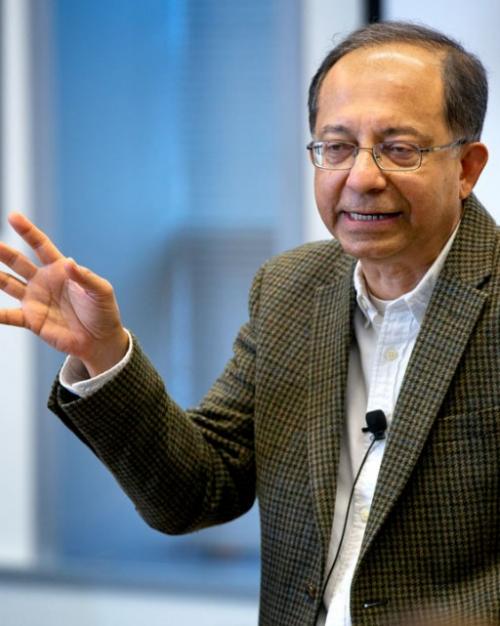First came the Big Bang. And in the moments afterward? Some physicists believe this so-called inflationary epoch was punctuated by phase transitions in which states of matter underwent significant changes.
One potential model for understanding these transitions is superfluid helium-3. That’s because helium-3 remains a liquid down to absolute zero, or minus 459.67 degrees Fahrenheit. At a few thousandths of a degree above absolute zero, it transforms to its superfluid state and flows without resistance. As a superfluid, it is a pure, clean system – like the very stuff that birthed the universe.
A Cornell-led collaboration identified an unusual behavior of superfluid helium-3 when it undergoes a phase transition between two different superfluid states – a transition that theoretically shouldn’t happen reliably. If the transition doesn’t occur where thermodynamics dictate, then the system is in a “supercooled” state. By varying the pressure of the system while lowering the temperature, the researchers caused the superfluid to transition at even lower limits, enhancing its supercooling. This display of pressure, or path, dependence has never been explored in helium and is entirely unexpected.
“It’s kind of strange, because if you look in textbooks, when experiments are conducted, everybody uses constant pressure,” said Jeevak Parpia, M.S. ’77, Ph.D. ’79, professor of physics in the College of Arts and Sciences, who led the Cornell team. “You essentially set the pressure in your system, and then you change the temperature, and things evolve. Whatever happens at a particular point happens because you’re changing the temperature. It’s so unusual that we see this happen.”
The team’s paper, “Path-Dependent Supercooling of the 3He Superfluid A-B Transition,” published May 25 in Physical Review Letters. The paper’s lead author is former postdoctoral researcher Dmytro Lotnyk.
The A to B phase transition is not always easy to predict, because at such a low temperature it isn’t governed by the classical laws of physics. On top of that, superfluid helium-3 is something of a mystery. Because it’s a clean system, in theory it should remain metastable and not transition to a new phase at all. Yet, it does. Different mechanisms and concepts, such as adjacent phases, have been proposed to explain its surprising phenomena.
Parpia’s group has been exploring these phenomena with their longstanding collaborator, John Saunders, professor of physics at Royal Holloway, University of London.
The group fabricated a silicon device 1.1 microns high and 3 millimeters wide, with a 100 microns-long channel that separated two chambers. They flowed the helium-3 into the channel and flash-heated the system, then observed it cooling as quickly as possible. During a series of experiments, they noticed something puzzling.
When cooled at constant pressure, helium-3 passes through a point where the A phase reliably transitions to the B phase. However, when helium-3 is cooled at a higher pressure and then depressurized after it crosses the transition temperature to superfluidity, the A phase can be supercooled to the B phase at even lower temperatures and lower pressures than before, when constant pressure was applied.
“The complexity of helium-3 probably accounts for its pressure or path dependence,” Parpia said.
Parpia believes one possible reason for this trait is that the superfluid is not described by a single set of parameters that account for its energy. Instead, each of its states is described by a set of 18 parameters. To convert from one phase to another, all the terms that are different must change. This effectively requires more energy than is available.
“One thing we want to explore is does this path dependence kind of narrow and go away as we get away from this region? That’s one very important question, actually, to answer,” Parpia said. “The second thing that we really want to do is to add structure to the channel between the two volumes. If we can do that, then we can engineer, in a prescribed way, new phases.”
Co-authors included Erich Mueller, professor of physics (A&S), who provided theoretical support; former postdoctoral researchers Anna Eyal and Abhilash Sebastian; Nik Zhelev, M.S. ’13, Ph.D. ’16; postdoctoral researcher Yefan Tian; undergraduate research associate Aldo Chavez ’22; and research support specialist Eric Smith.
The research was funded by the National Science Foundation and the Engineering and Physical Sciences Research Council in the United Kingdom.
The researchers made use of the Cornell NanoScale Science and Technology Facility (CNF).




